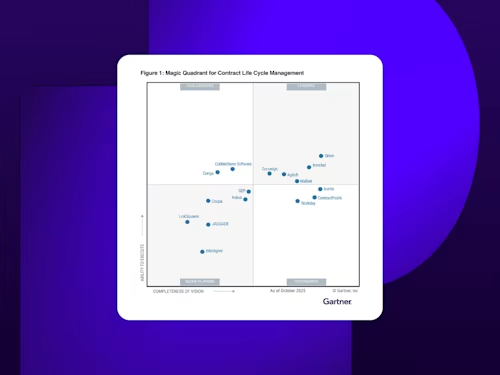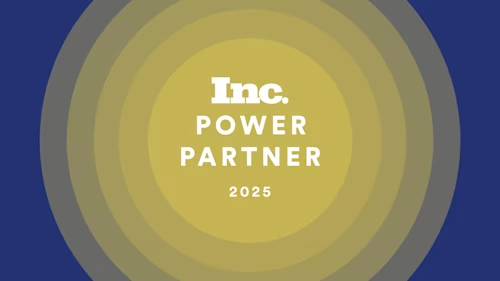
Digital Lending: A Roadmap for Credit Unions
To exceed member expectations and stay ahead of the competition, credit unions need to embrace digital lending.

To exceed member expectations and stay ahead of the competition, credit unions need to embrace digitization at every member touchpoint.
Credit unions have long held certain enviable advantages in the competitive financial services industry. Their philosophy of “people helping people” has helped drive strong member satisfaction and loyalty rates, while credit unions’ lean operational structures and non-profit status have allowed them to offer better-than-market interest rates on deposits and loans.
But the landscape is shifting, and credit unions can no longer take their members’ satisfaction or loyalty for granted.
Credit unions of all sizes are facing fierce competition from deep-pocketed commercial and regional banks as well as upstart financial technology (fintech) brands and challenger banks. Companies like SoFi, Ally and Chime, to name a few – are investing hundreds of millions of dollars in digital technology to deliver the Amazon-like digital experiences that consumers now expect in all aspects of their lives.
And while credit union membership has continued to grow, having reached 124.3 million in December 31, 2020, many members don’t rely on financial cooperatives to provide all of their core banking needs. Frustrated by credit unions’ limited channels of engagement, digitally-savvy millennial and Gen Z consumers are migrating elsewhere for coveted, lucrative services like loans and payments.
Invest in digital to engage your members
Credit union leaders must find ways to reinvigorate member engagement – or risk being relegated to the financial sidelines. One way to meet members’ changing expectations is through investments in digital technologies that offer new ways to interact.
Credit unions should take a page from their competitors’ most successful digital and mobile offerings. Members don’t expect a cutting-edge mobile app or website that rivals those from the world’s largest banks. But they certainly don’t want to download multiple PDF forms to apply for a loan, or deal with a glitchy mobile app.
Small improvements to the digital banking experience can pay big dividends—and require little effort or money to implement. It’s important to remember that what members value about credit unions are the low rates, unparalleled service and other benefits that big banks and fintech startups can’t match. Credit unions should not erect roadblocks to their satisfaction through a poorly conceived or outdated digital strategy.
So how can credit unions play to their strengths and roll out the digital experiences that members want, within a manageable budget?
First, examine those workflows that cause bottlenecks for members and employees, such as the manual, paper-based agreement processes involved with a loan application, a new checking account, a new line of credit and other financial services.
A case in point is online consumer loan applications. Today, too many credit unions still bury hard-to-find downloadable application forms on their website—or, worse, force members to physically visit a branch in order to complete their application. This is not just an inconvenience for members – it also burdens staff with piles of paperwork.
Docusign Agreement Cloud streamlines processes for a better experience
Digital tools like Docusign can address these challenges and help credit unions save time and money by simplifying the process of preparing, signing and managing agreements. And the Docusign Agreement Cloud™ makes it easy to handle every step of the agreement process and deliver better value on the services that members want most.
Digitization with tools like Docusign can help credit unions extend their reach and meet members where they do their banking today – online and on the go. Digital services can also reduce branch employees’ administrative workloads, freeing up time to focus on providing world-class member service. In short, digitization can make the credit union more efficient, scalable and more competitive.
Digitization can support a wide range of member scenarios, including auto lending, residential mortgages and consumer loans. For example, since adopting Docusign, Firstmark Credit Union has shortened its average auto loan application-to-funding time by more than 50%, reduced processing labor costs at their San Antonio headquarters by $8,000 per month and captured 20% of loans that were abandoned due to delays and other frustrations.
Meanwhile, longtime Docusign customer Alliant Credit Union increased its members’ satisfaction with the loan process—and saved money. Now, 91% of applicants sign their loan documents in 10 minutes or less. Within the first year of implementing the Docusign Agreement Cloud, Alliant saved nearly $300,000 in operating expenses.
Ultimately, the payoff from digitizing the loan application and agreement process can be significant. Benefits include increased member loyalty, revenue growth, happier staff and more time to serve members.
Five steps to getting started with a digital system of agreement
1. Improve employee efficiency: A traditional loan process requires both the member and an employee to be in the same location to sign forms. It’s inconvenient for members, wastes time and eats into the credit union’s slim operating margins. Delayed loan signature receipts can also increase the likelihood that a member finds (and accepts) a competing loan offer.
With digital forms and signatures, members can sign and even notarize loan and other banking forms without having to head to the local branch, the mailbox or the post office. With Docusign Notary, members can connect with notaries public remotely and electronically via a secure audio-visual session from their device. That may be the difference between winning or losing a member’s business.
2. Integrate digital tools into daily workflow: True digitization isn’t just about e-signatures. Docusign’s secure, cloud-based tools integrate easily into the credit union’s existing loan-origination systems (LOS), as well as imaging, document management and contract management systems. Integrating with these systems results in streamlined processes with:
Easier access to data
Data consistency across the organization
Prepopulated data in key applications and forms
3. Automate agreements with secure digital forms: Secure accessibility is integral to any digitization effort, especially in financial services. Docusign helps credit unions engage with their members wherever (and whenever) it’s convenient for them— whether online, in-person at a branch, via a mobile device—or even all three!
Credit unions can also streamline and fully digitize their verification processes. Docusign's integrations with key verification providers allow credit unions to electronically verify both member identity and member-provided account information -- all without requiring in-branch visits.
And through Docusign Guided Forms, members are asked a few simple questions to help guide them through complex processes and agreements. This helps ensure that no form is incomplete, and all data is accurate before the application is submitted to the LOS.
4. Prioritize collaboration: Some credit union lending professionals still prefer to work face to face with their members, while retaining the ability to interact through mobile and online channels. For that, there is Docusign Rooms for Mortgage, which provides credit unions and their members with a secure, collaborative, virtual destination in which to handle the residential lending process. It gives credit unions the flexibility to work with members both in-person and virtually, and eliminates up to 70% of the paperwork. It also leverages Docusign’s broader suite of digital closing solutions and partnerships, including electronic signature and vaulting capabilities.
5. Maintain a digital audit trail: Lastly, Docusign makes it easy to stay compliant with all credit union and lending regulations, by enabling the secure storage and access of financial information and forms with a digital (and court-admissible) audit trail.
The digital revolution has arrived
Docusign provides credit unions with a single, secure digital platform for managing the agreement process throughout the lending lifecycle – without a lengthy and costly implementation. To learn more, see how University Federal Credit Union brought speed and ease to the lending experience with Docusign eSignature and Guided Forms. For more information, consult Docusign for Banking and Financial Services to learn how you can leverage Docusign to deliver the service your members have come to expect.
Related posts
Docusign IAM is the agreement platform your business needs



